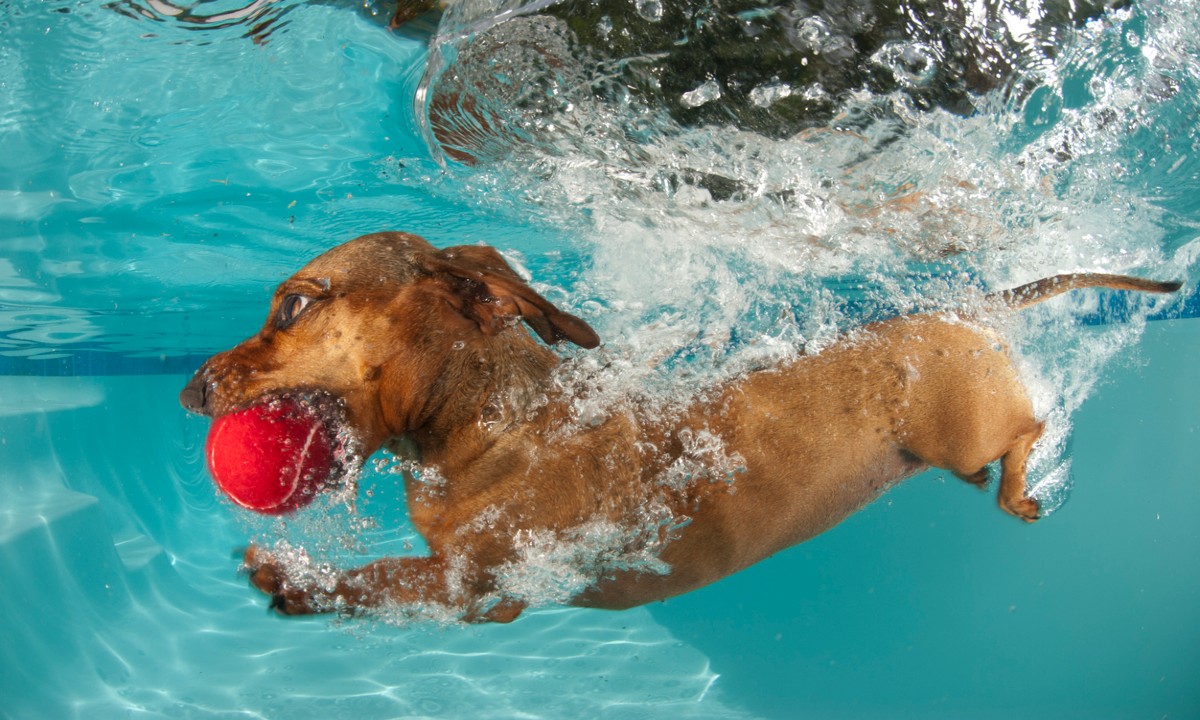Are Dogs Natural Swimmers?

Don’t believe everything you read on the internet — all dogs aren’t natural swimmers. It’s a deadly misconception that needs to be addressed. The confusion is understandable since there’s even a swimming technique named after dogs — the doggy paddle. Plus, if you pick up a dog and bring it near a water surface, it’ll start pedaling right there in the air, even if it can’t swim. It feels as if they’re born swimmers, but they’re not.
Dogs Who Are Natural Swimmers
There are three types of dogs when it comes to swimming. The first type is dogs who are natural swimmers: the American Water Spaniel, Labrador Retriever, Golden Retriever, Portuguese Water Dog, etc. Not only do they swim really well, but they’re actually water-loving dog breeds. That’s exactly why most of them are bred for water rescue and other water activities.
The aforementioned dog breeds have long and strong legs, making their bodies excellent for swimming. While it’s true that these breeds are natural swimmers, you must also keep in mind that swimming abilities may vary depending on individual dogs. For instance, dogs with disabilities or old-aged dogs may have trouble swimming, regardless of their breed.
Even if you’ve got a spaniel or retriever, we suggest starting slow. Carefully introduce them to shallow waters and help them grow from there. Always keep in mind that the uncontrollable dynamics of the open waters can overwhelm and disable even the strongest of swimmers.
Dogs Who Can Swim but Lack the Nerve
The second type includes dogs who can swim but are reluctant to do so. The breeds that fall in this category are Maltese and Chihuahuas. While these dogs have the ability to swim, the vastness of water can quickly overwhelm them. What does this mean for you? You’ll have to spend more time training them and you’ll even have to be more careful than with the first category of swimmer dogs.
You must start by slowly introducing them to swimming and notice how they react to it. Whenever they meet a milestone, reward them for their success and keep at it until they’re confident enough to swim.
Dog Breeds That Can’t Swim
The last type includes the dogs that can’t swim, They’re in the majority and must always be supervised when they’re near water. These dogs may be able to accompany you in shallow waters but you must always make sure that they aren’t anxious.
The Importance of a Dog Life Jacket and Floating Dog Toys
Whether you’re training a dog who can swim or playing with a non-swimming dog on the beach, dog life jackets are a must. An anxious dog, whether it can swim or not, may jump into the water from a boat and you won’t even see it coming. So, make sure your dog has a life jacket on whenever they’re near water.
The second thing you can do to improve safety and make the pool day more enjoyable for dogs is to introduce floating dog toys. You could get them a floating tube, a small inflated pool, or some shark-shaped floating toys for them to chase after. If you’re training your dog to swim, these toys can serve as an excellent ice breaker and bait them into enjoying shallow waters.
The Takeaway
To sum it up, all dogs are not natural swimmers, and even the ones that are, you have to practice extreme caution when exposing them to water. Start slow from shallow waters and train them well. Lastly, don’t let them be near water without some sort of floatation device or a life jacket.
